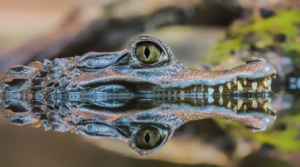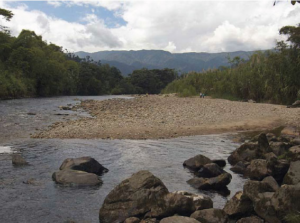Turning your back to the Panecillo, in a south-north direction along García Moreno Street, you can visit seven stone crosses, located in the atriums of the churches of the historic center of Quito. With a short walk through the streets and squares of the Historic Center of Quito, the visitor will observe churches, convents, houses and buildings built with mud and stone. Quito was declared a UNESCO World Heritage Site in 1978.
According to Juan Paz y Miño, chronicler of the city, the colonial constructions date back to the time of the arrival of the Spaniards, from 1534. The colonists began to build the city over the conquered town, dividing the land among them.
The conquistadors built as many churches as possible to placate the beliefs of the indigenous people, who used to stand on the outskirts to listen to the sacristan officiate mass; stone crosses were gradually placed over the decades and centuries at the entrance of each church.The street of the seven crosses was outlined as several ravines that cut the path were filled in, from south to north you can see at one end the Panecillo -former temple of the sun- and on the other side the neighborhood of San Juan -formerly the temple of the moon-.
This street was known since then as the street of the seven crosses until the day it took the name of Gabriel García Moreno, in homage to the late conservative president, assassinated by Faustino Lemos Rayos.
Turning your back to the Panecillo, in a south-north direction you can visit the following crosses located in the atriums of the churches of the historic center of Quito.
First cross San Lázaro Psychiatric Hospital
Donated to the Jesuits in 1587, later this place was used as a shelter for the poor, destitute and orphans. Later, in the era of the Republic, they incorporated a psychiatric section. In its corner chapel is the first cross.

From this place, a stone stairway leads to the Panecillo, in original Quichua it was called Yavirac.
Second cross Arco de la Reina
The second cross was placed in the current Rocafuerte Street, in the Arco de la Reina, a place that provides a roof for the devotees who were sheltered in front of the church.
Its construction was authorized by the town council in 1726, the devotees were protected from the weather under this structure built with lime and stone, the wall is supported by two pillars at one end and a stone base that serves as a base.
Known later as the triumphal arch, it is said that the devotee Mariana de Jesus, from her house followed the mass of the chapel of the arch of the Queen. Today, this site houses the Carmen Alto monastery and on the other side the City Museum with a museographic and dynamic approach.
Third Cross Church of the Company

The third cross stands out on the door of the stone façade of the Church of the Company of Jesus.
Located on Sucre Street, this baroque style façade is symmetrical due to its undulation with a curved carving in its Solomonic columns, the construction inside and outside of this temple reflect the indigenous artisan artwork combined with the work of European architects and sculptors. The Jesuits began construction in 1605 and it was completed in 1690.
fourth cross Iglesia del Sagrario

The fourth cross is at the entrance of the church El Sagrario.
Located near Espejo Street, this temple was built in 1699. It was for the exclusive use of Spaniards and Creoles. On its walls are placed several plaques that recall some memorable events for the city.
Among the historical events registered there are the proclamation of the Independence of the Republic, in 1809.

Fifth Cross Cathedral Church
The fifth cross was erected at the entrance of the Cathedral Church.
On the corner of Eugenio Espejo Street, it is considered as the main cross. The Cathedral was built in 1535 with mud walls and thatched roof, 10 years later it was named The Cathedral, in 1562 it was demolished to rebuild it with stone bases.

The construction of the church was completed in 1806 by the President of the Royal Court, Baron Héctor de Carondelet.
This major cross was consecrated with the construction of the Cathedral in 1572.
It is said that the statue of a rooster, located in the atrium of the Cathedral, comes to life to attack drunken men who pass by and dare to insult at night or early in the morning.
Sixth cross church of the Immaculate Conception
The sixth cross stands out on the outside background of the white walls of the church of the Immaculate Conception.
Located on the corner of Chile Street, founded in 1577, it was the first monastery of Quito, the building has two entrances, one on Garcia Moreno Street and the other on Chile Street, its floor is made of stone and in the background you can see a wooden atrium. The cloister of the infirmary was restored obtaining the biennial mention of architecture of Quito 2002.

Seventh Cross Church of Santa Bárbara
The seventh cross is located in the church of Santa Barbara on Manabi Street.
It was built in 1550 as an emblem of the struggle of the people of Quito, founded in 1581 this building is elevated with respect to the level of the sidewalk, was occupied by the Augustinians and then the Jesuits in 1892, the cross was removed and later was reincorporated in the twentieth century.





